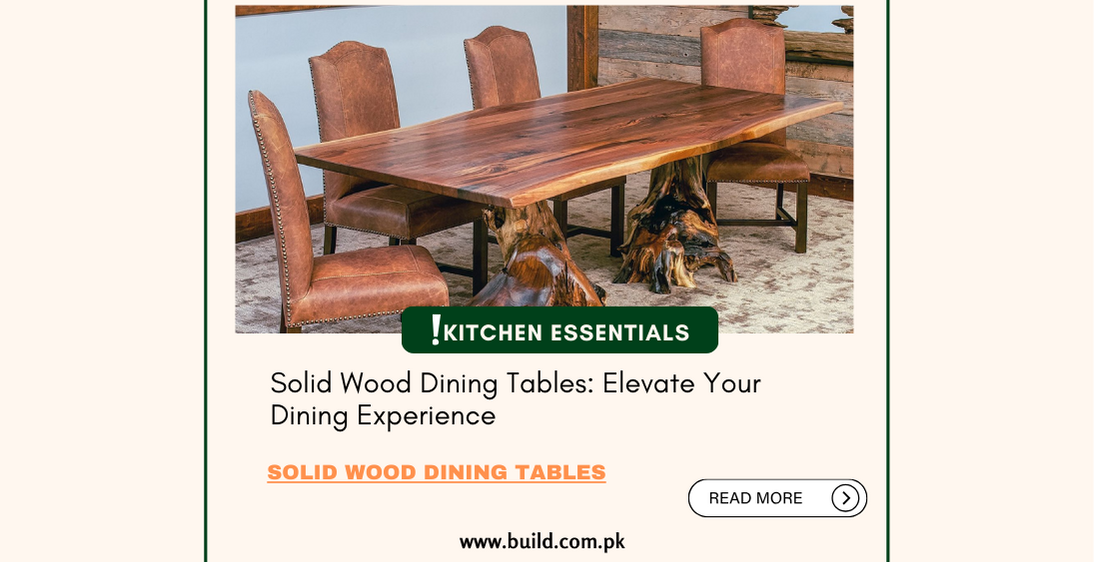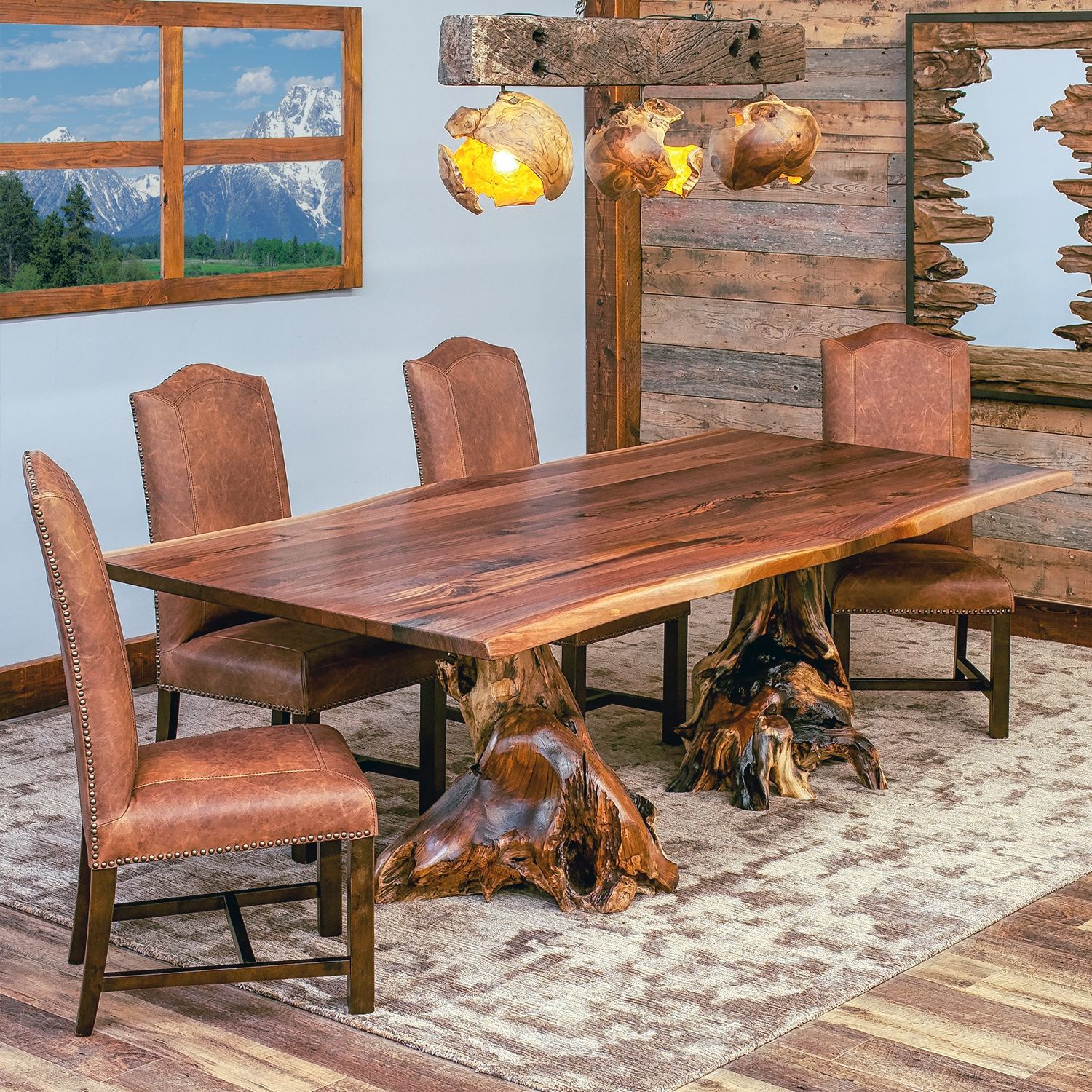Solid Wood Dining Tables: Elevate Your Dining Experience

Introduction:
A solid wood dining table serves as the
centerpiece of any dining room, combining timeless elegance with durability and
versatility. Whether you're hosting a formal dinner party or enjoying everyday
meals with family, a solid wood dining table adds warmth and character to your
home. In this extensive guide, we'll delve into the world of solid wood dining
tables, exploring their benefits, features, styles, maintenane, and more, to
help you make an informed decision when choosing the perfect dining table for
your space.

Benefits of Solid Wood Dining Tables
Durability:
Solid wood dining tables are built to last for
generations, thanks to the inherent strength and durability of wood. Unlike
veneer or composite materials, solid wood can withstand daily wear and tear,
making it an ideal choice for busy households and frequent use.
Timeless Beauty:
One of the most appealing aspects of solid
wood dining tables is their natural beauty and timeless appeal. Each piece of
wood boasts unique grain patterns, textures, and colors, adding character and
warmth to your dining room decor. Whether you prefer the rustic charm of
reclaimed wood or the refined elegance of hardwoods like oak or walnut, solid
wood dining tables offer a wide range of aesthetic options to suit your style.
Versatility:
Solid wood dining tables are incredibly
versatile, blending seamlessly with varius design styles and decor themes.
Whether your home is traditional, modern, farmhouse, or eclectic, there's a
solid wood dining table to complement your space. Additionally, solid wood
tables come in a range of sizes, shapes, and finishes to accommodate different
room dimensions and seating requirements.
Investment Value:
While solid wood dining tables may have a
higher upfront cost compared to alternatives, they offer excellent long-term
value. As high-quality pieces crafted from natural materials, solid wood tables
tend to appreciate in value over time, making them a worthwhile investment for
your home.
Features to Consider When Choosing a Solid Wood Dining Table
Wood Type:
Solid wood dining tables are available in a
variety of wood species, each with its unique characteristics and aesthetics.
Common wood types include oak, maple, cherry, walnut, and mahogany, each
offering distinct grain patterns, colors, and durability levels. Consider the
look and feel you want to achieve when selecting the wood type for your dining
table.
Construction:
Pay attention to the construction methods used
in crafting the dining table, as they can impact its durability and longevity.
Look for tables with sturdy joinery techniques such as mortise and tenon or
dovetail joints, which provide superior strength and stability. Additionally,
consider the thickness of the table legs and aprons, as thicker components tend
to be more robust and durable.
Size and Shape:
Consider the size and shape of the dining
table in relation to your dining room space and seating requirements.
Rectangular tables are traditional and offer ample seating capacity, while
round or square tables are ideal for smaller spaces and intimate gatherings.
Additionally, consider the table's height and ensure it complements your dining
chairs for optimal comfort and functionality.
Finish and Maintenance:
Choose a finish for your solid wood
dining table that enhances its natural beauty while providing protection
against spills, scratches, and UV damage. Options include clear lacquer, oil,
wax, or polyurethane finishes, each offering different levels of sheen and
durability. Follow manufacturer guidelines for proper maintenance and care to
ensure your dining table retains its beauty for years to come.
Styles of Solid Wood Dining Tables
Traditional:
Traditional solid wood dining tables feature
classic designs characterized by ornate details, turned legs, and rich wood
finishes. These tables evoke a sense of elegance and sophistication, perfect
for formal dining rooms and traditional decor schemes.
Modern:
Modern solid wood dining tables showcase sleek, clean
lines, and minimalist designs, often with a focus on natural materials and craftsmanship.
These tables offer a contemporary aesthetic that complements modern interiors
and minimalist decor tyles.
Rustic:
Rustic solid wood dining tables embrace the natural
beauty of wood with distressed finishes, rough-hewn edges, and farmhouse-inspired
designs. These tables exude warmth and charm, making them ideal for casual
dining spaces and rustic decor themes.
Industrial:
Industrial solid wood dining tables feature
rugged materials like reclaimed wood and metal accents, with a focus on raw, unfinished
textures and utilitarian design elements. These tables add an edgy,
urban-inspired vibe to dining rooms and loft-style living spaces.
Maintenance Tips for Solid Wood Dining Tables
Regular Cleaning:
Clean your solid wood dining table
regularly with a soft, damp cloth to remove dust, dirt, and spills. Avoid using
harsh chemical cleaners or abrasive materials that can damage the wood's
finish.
Protecting the Surface:
Use coasters, placemats, and
tablecloths to protect the surface of your dining table from scratches, heat
marks, and moisture damage. Wipe up spills promptly to prevent staining and
warping of the wood.
Avoiding Direct Sunlight:
Place your solid wood dining table
away from direct sunlight to prevent fading and discoloration of the wood's finish.
Consider using curtains or blinds to filter sunlight and protect your table
from UV damage.
Seasonal Maintenance:
Seasonal changes in humidity can affect the wood's moisture content and cause it to expand or contract. Use a humidifier or dehumidifier to maintain consistent humidity levels in your home and prevent warping or cracking of the wood.
Conclusion:
A solid wood dining table is more than just a piece of furniture—it's a timeless centerpiece that brings people together and creates lasting memories. With its durability, beauty, and versatility, a solid wood dining table is an investment in both style and functionality that will enhance your dining experience for years to come. Consider the features, styles, and maintenance tips outlined in this guide to choose the perfect slid wood dining table for your home, and elevate your dining space with the natural warmth and elegance of wood.









